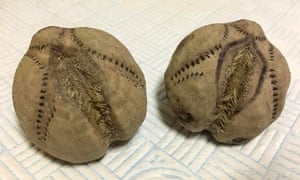Genetic tests confirm that a mysterious, unnamed species of beaked whale only seen alive by Japanese fishermen roams the northern Pacific Ocean, according to research published this week.
The testing shows the black whales, with bulbous heads and beaks like porpoises, are not dwarf varieties of more common Baird’s beaked whales, a slate-gray animal.
Japanese researchers sampled three black beaked whales that washed up on the north coast of Hokkaido, the country’s most northern island, and wrote about them in a 2013 paper. The challenge to confirm the existence of the new animal was finding enough specimens from a wider area for testing and matching genetic samples, said Phillip Morin, a National Oceanographic and Atmospheric Administration research molecular biologist.
He and his team uncovered five other whales, all found in Alaska, that matched the species found in Japan.
“Clearly this species is very rare and reminds us how much we have to learn about the ocean and even some of its largest inhabitants,” he said in an announcement.
The largest beaked whale varieties can reach 40 feet and spend up to 90 minutes underwater hunting for squid in deep water. They are hard to research because they may spend only a few minutes at the surface, Morin said by phone last Thursday. They rarely breach, travel in small numbers and blend into their surroundings.
Japanese fishermen reported occasionally seeing a smaller, black beaked whale that they called “karasu,” the Japanese word for raven, or “kuru tsuchi,” black Baird’s beaked whale.
The Japanese researchers in 2013 were limited in declaring that they had found a new species because their three samples were from one location, said Morin, who works at NOAA’s Southwest Fisheries Research Center.
“My first idea was to go to our collection, where we have the largest collection of cetacean samples in the world,” he said.
In a paper published Tuesday in the journal Marine Mammal Science, Morin and fellow authors describe analyzing 178 beaked whale specimens from around the Pacific Rim. They found five that matched with the Japanese whales.-
read more


